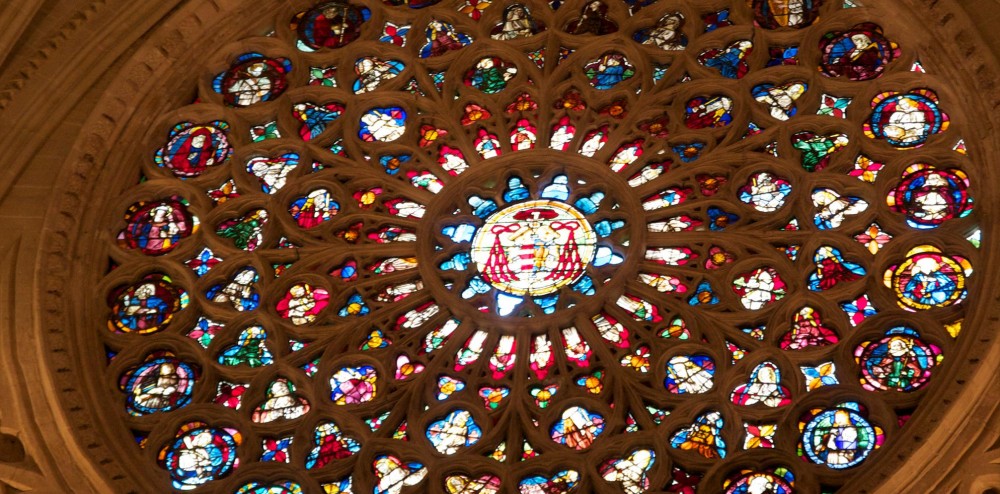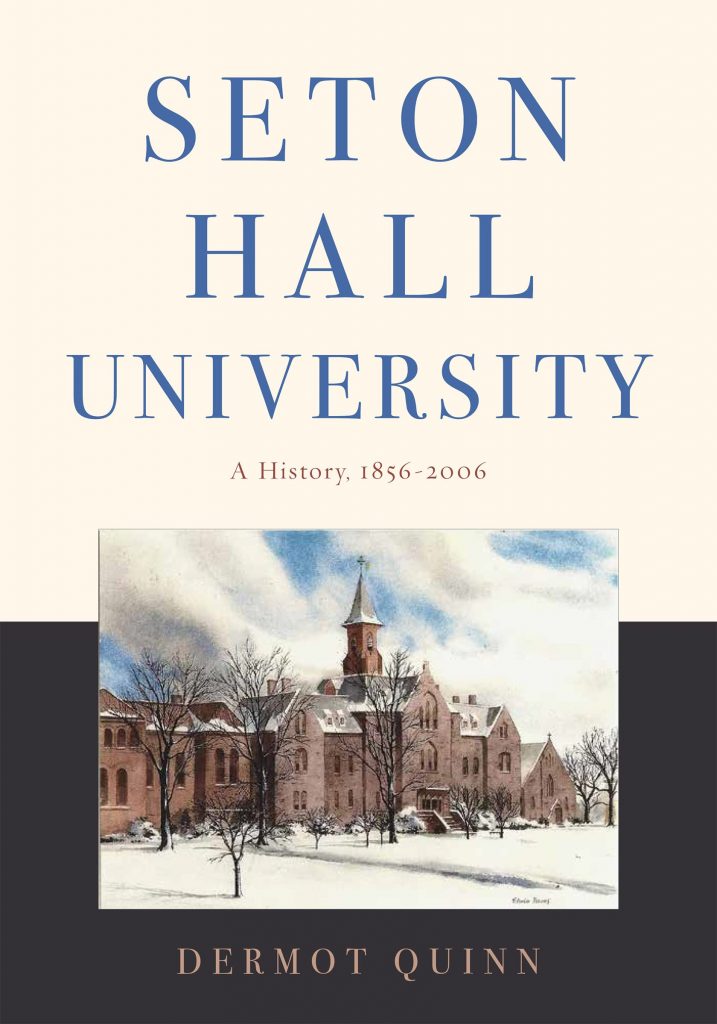The nimble quill of the scribe has been celebrated from antiquity (Psalm 45:1), and Dr. Dermot Quinn brought the image into the computer age with the elegant prose of his new book, Seton Hall University: A History 1856-2006 (New Brunswick: Rutgers University Press, 2023).
May I be pardoned for focusing on the early 1950s? “Chapter 11: A New University” includes a section titled Two Institutes. “The creation of two Institutes indicated Seton Hall’s commitment to research. Each would eventually give Seton Hall an international reputation. One was politically conservative. The other was theologically liberal. Together, they were institutionally transformative” (p. 179).
In 1951 The Institute of Far Eastern Studies focused on China, Japan, Korea and Vietnam, with research and classes that placed Seton Hall as the prominent place for the study and teaching of Chinese and Japanese languages and cultures.
The Institute of Judaeo-Christian Studies, founded on March 25, 1953, was Seton Hall’s contribution to a “remarkable story” (p. 181). Rightly, Dr. Quinn focuses attention on Msgr. John Oesterreicher, drawing heavily upon John Connelly’s book, From Enemy to Brother: The Revolution in Catholic Teaching on the Jews, 1933–1965 (Harvard University Press, 2012). Dr. Bernhard Scholz, Provost when Msgr. Oesterreicher died in April 1993, wrote:
“Rarely has a life over five decades been dedicated so single-mindedly to so necessary and noble a goal; and rare indeed must be the man in the Church whose concerns and hopes became, within his lifetime, the policies of popes and a General Council of the Church.”
The Institute of Far Eastern Studies, under Paul Sih and John Wu, united the traditions of East and West. “John Oesterreicher wished to connect Christians and Jews and did so, appropriately, in The Bridge” (p. 204). Earlier Dr. Quinn had noted:
“The Institute of Judaeo-Christian Studies and Oesterreicher were interchangeable. Well-connected and intellectually courageous, bringing to the Institute and its annual publication The Bridge his probing and restless spirit of inquiry, he was almost too bright a star for Seton Hall… No-one doubted his firepower. In 1960, Cardinal Augustin Bea asked Oesterreicher (along with Father Gregory Baum and Abbot Leo Rudloff) to act as a theological advisor in formulating a document on the Church’s relations with the Jews” (p. 182).
Pope St. Paul VI promulgated this Declaration on the Church’s Relation to Non-Christian Religions (Nostra aetate) on October 28, 1965.
I thank Dr. Quinn for mentioning the continuity of the Institute’s work for advocacy of better relations between Christians and Jews on the part of “the Dominican Sister Rose Thering and Fathers Edward Flannery and Lawrence Frizzell” (p. 182).
In another note of gratitude, I would mention that Seton Hall’s hospitality to the Institute was based on a “dowry,” the generous support offered by a French Catholic lady, H. Suzanne Jobert. Her benevolence continues to sustain our work to this day!
For those who are interested in reading an excerpt from Dr. Quinn’s book, please visit “The Origin Story of Seton Hall,” published in Seton Hall Magazine.


I am very pleased to receive your message and kind words, Eleanor! Of course, I remember you and your research for the thesis (survey of all 21 counties of N.J.!). I continue to teach, while looking for a successor. I wish you continued good health and happiness!
Thank you, Anne!
For Seton Hall, the Institute of Judeo-Christian Studies continues to be a shining star for the world.
To Father Frizzell,,
I am happy to have received this post and to reconnect briefly with Seton Hall, Judaeo-Christian Studies Department.
Several decades ago, I was a student in that department, perhaps you recall my name. At first I enrolled , one of 4 students , out of curiosity and a yearning to learn and then, later , as a geriatric care manager ,wanting to connect my learning with my profession. Now I am retired from my profession but continue the path of learning. My short time at Seton Hall, under the direction of Father Frizzell remains one of the most important periods of my life. My world was expanded and enriched by the classes I took though I was, at the time, quite uninformed as a Jew and ignorant of the connection between Judaism and Catholicism. For that, I thank you at Seton Hall. May your work continue to thrive.